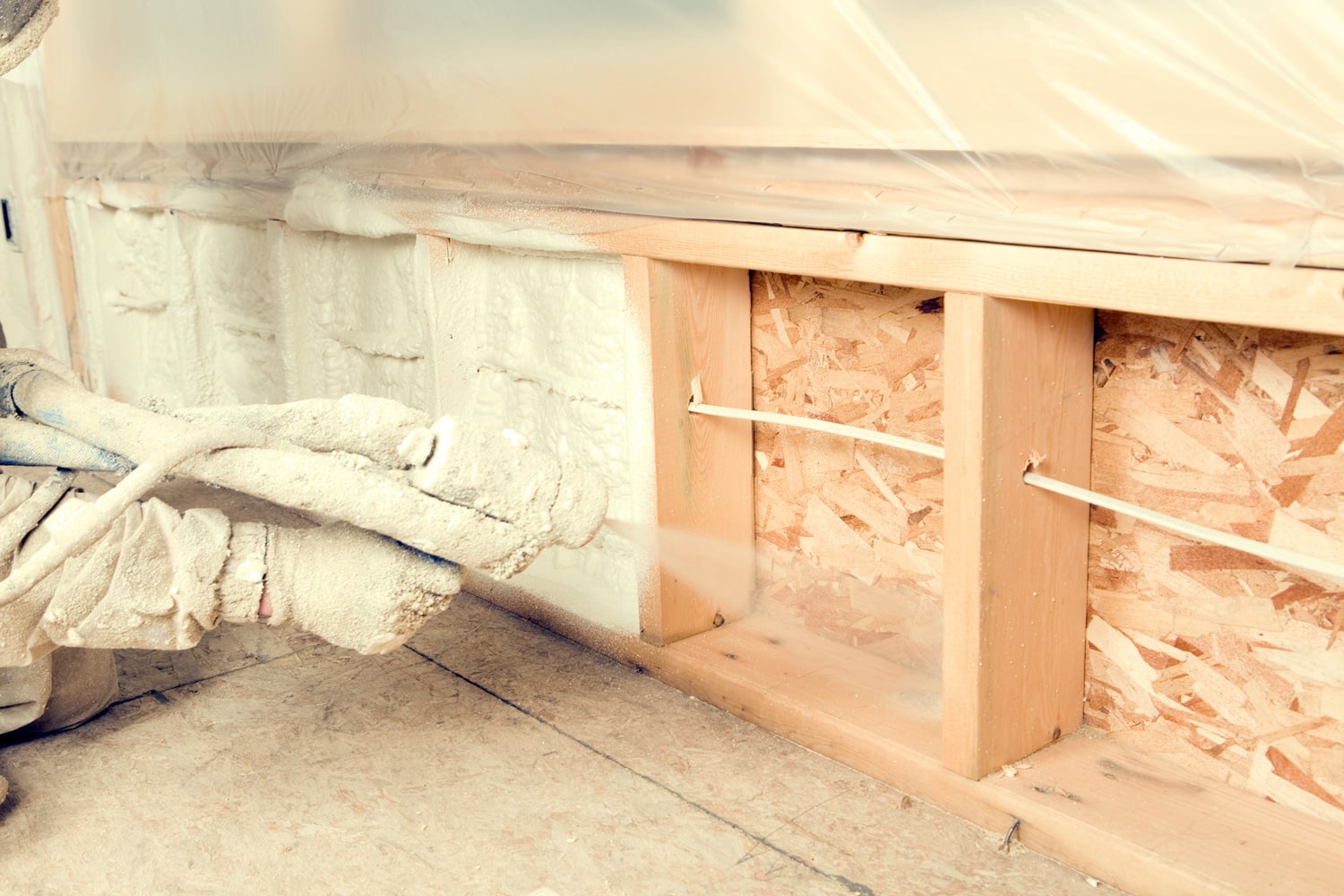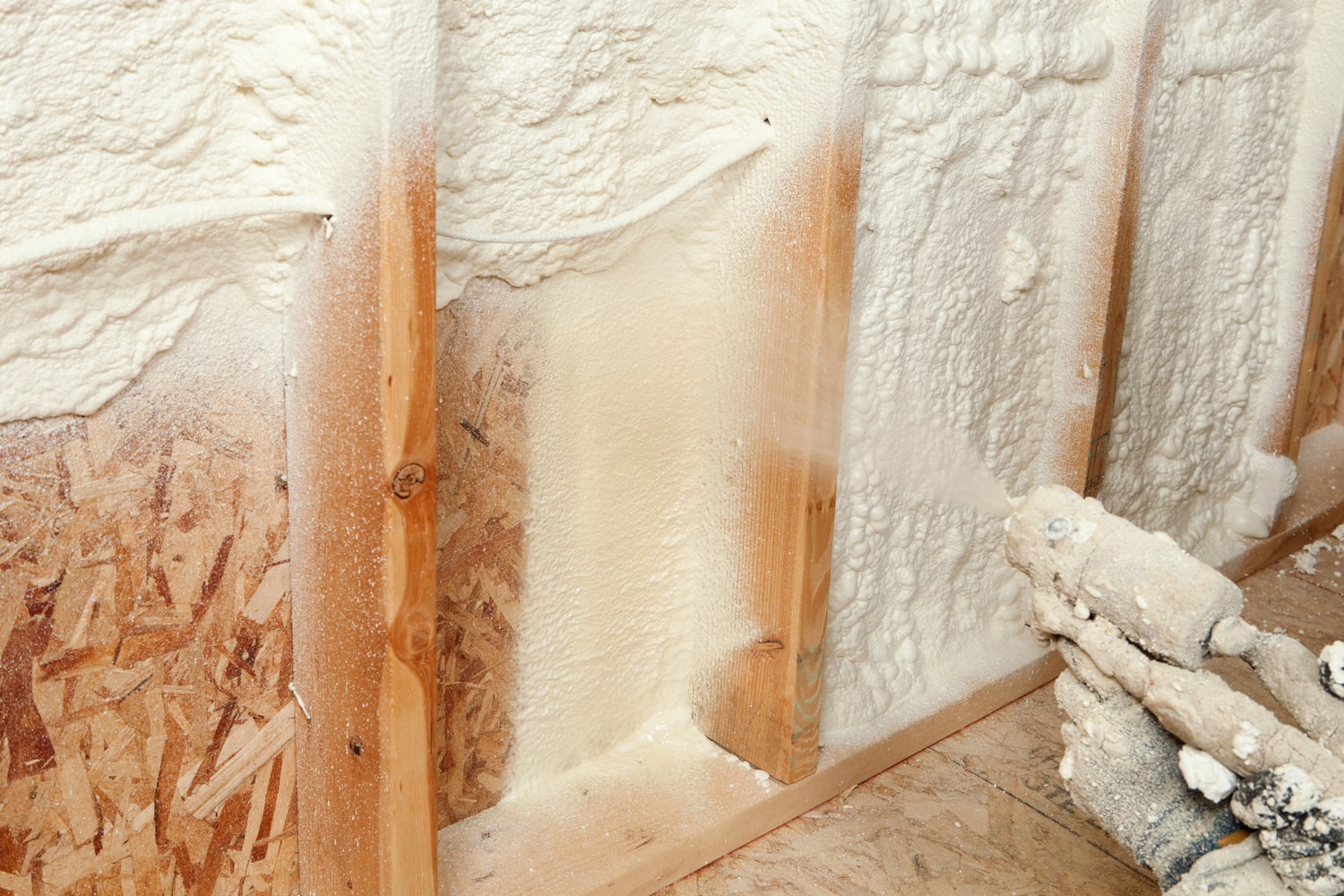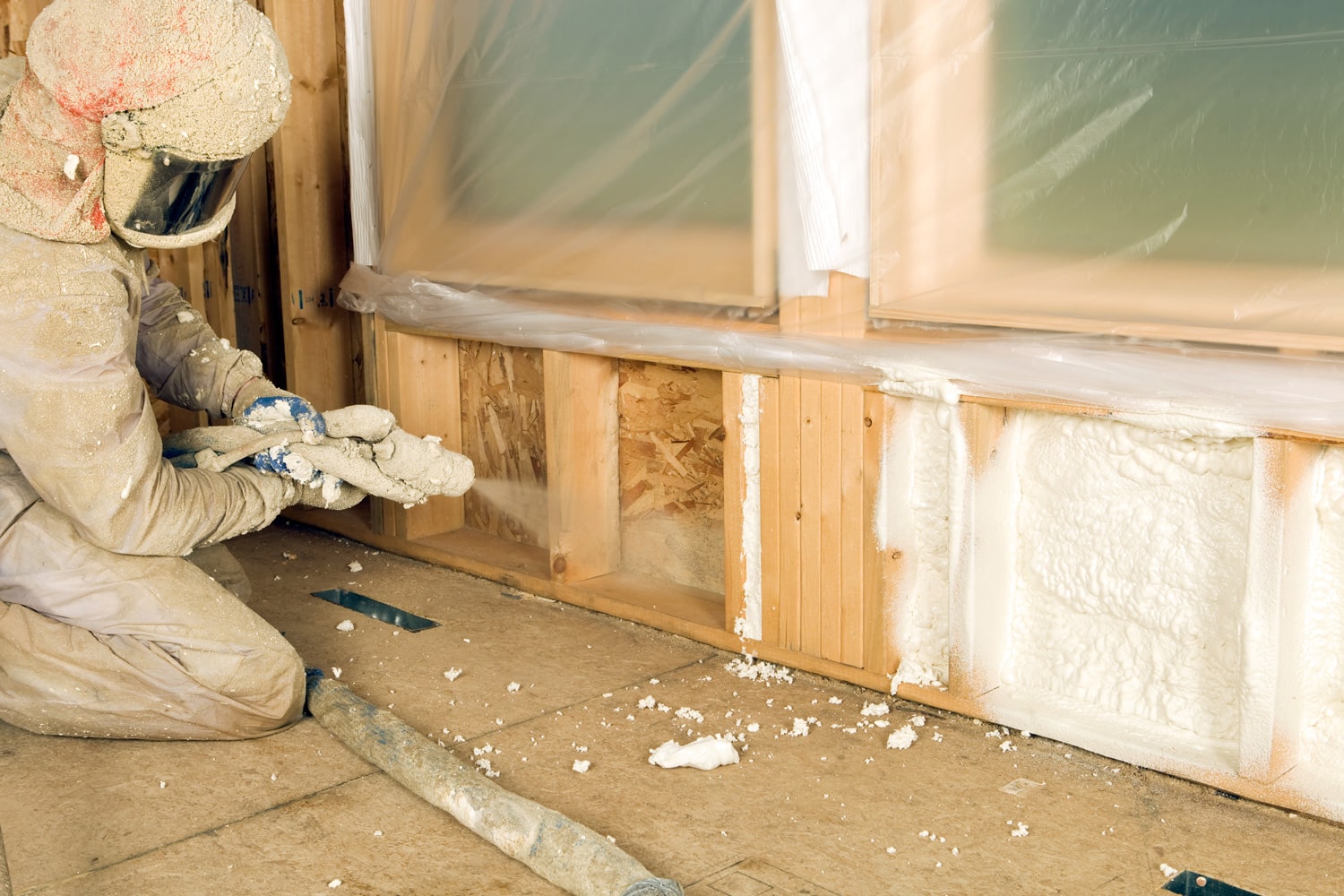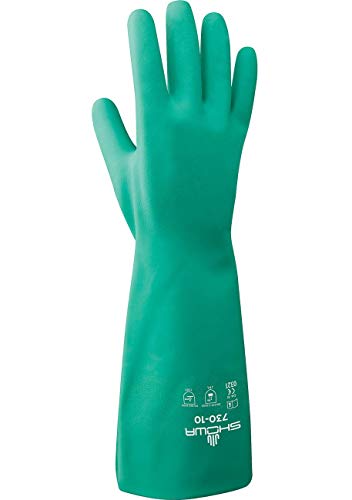Insulation creates an energy-efficient home, helping you save on costs, reducing environmental impact, and keeping your home at comfortable temperatures. You can better these effects in the long run by improving or changing your home insulation. One of those popular options includes foam insulation, but you might be wondering, can you install it without a professional? We've asked the experts and have all you need to know about DIY foam insulation in this post!
You can install foam insulation on your own using a DIY spray foam insulation kit. Foam insulation effectively reduces energy consumption and saves on costs with a few basic steps to installation, namely:
- Inspect the area for gaps and leaks.
- Turn off any electricity nearby the surface to insulate.
- Prepare the surface you will be insulating.
- Carefully apply the foam into the crevices.
While it's possible to apply this insulation yourself, DIY installing foam insulation comes with a few risks and limitations varying on the issue you need to fix.
Installing foam insulation on your own is possible with the right tools and appropriate conditions. If you want the best solution, consider weighing the pros and cons. Keep reading to know more about these points.
![Construction Worker Spraying Expandable Foam Insulation between Wall Studs - Can You Do Foam Insulation Yourself [And How To]](https://hvacseer.com/wp-content/uploads/2022/06/Construction-Worker-Spraying-Expandable-Foam-Insulation-between-Wall-Studs-Can-You-Do-Foam-Insulation-Yourself-And-How-To.png)
How To DIY Foam Insulation

You can apply foam insulation without a professional with a DIY spray foam insulation kit. This type of insulation seals cavities without losing its shape over time. And so, they are best for tighter, hard-to-reach spaces.
Here are a few recommendations available as of writing:
Click here to see the Kraken Bond Fastcoat Spray Foam Insulation Kit on Amazon.
Get the Great Stuff Pro Fireblock Foam Insulation Sealant on Amazon.
If you're thinking of applying it yourself, below is a simple guide on how to do it:
1. Inspect The Area For Gaps And Leaks
Thoroughly inspect the area where you will be applying the foam insulation. Locate for gaps, leaks, and cracks on the surface. These can also be around it or hidden on the undersides.
2. Turn Off Any Electricity Nearby The Surface To Insulate
If there's any electricity close to or on the surface you will insulate, turn it off on the main switch. Spray foam insulation kits are usually flammable, so keep them away from flame or electricity before insulating.
3. Prepare The Surface You Will Be Insulating
The preparation you need to do varies on where you will add the insulation. If it's for cracks on the walls, remove any existing insulation and the drywall. For ceiling joists, take off loose pieces of insulation in the gaps. Before applying the foam, you should cover flooring and pipes, and window and door frames should be clean.
4. Carefully Apply The Foam Into The Gaps
Once everything is ready, take your spray foam and fill in the cracks. A tip for applying them is to prevent breaks or voids between the foam for a more effective seal.
Other Tips For Installing DIY Foam Insulation
A few other pointers before using DIY spray foam insulation include the following:
Wear Proper Protective Gear
You may need to protect your lungs with a respirator to keep yourself from inhaling chemicals from the foam. It's best to equip yourself with a full-protective suit, but you can make do with chemical-resistant gloves, goggles, and junky shoes.
Click here to get the Baomao Respirator Mask with Safety Glasses on Amazon.
Get the Showa Chemical Resistant Glove on Amazon.
Consider Different Types Of Kits
The amount of work you need determines what kind of kit you'll need. Smaller jobs are suitable for a few cracks and leaks, while bigger jobs require other foam insulation kits or even professional help.
Do Not Spray On Wet Surfaces
Spray foam won't stick if you apply it on a surface with moisture levels higher than 20%. Before spraying the foam, ensure the surface had no encounter or exposure to water for a while. If the area has experienced water damage recently, dry it off and test the moisture before insulating it.
Check out the General Tools Digital Moisture Meter on Amazon.
Plan It Out Before Application
Give the spray a test before applying it to the real thing! Doing this will clear the nozzle from clogs, setting them up for a consistent b2b backless job.
Don't Leave Insulation Exposed Around People
Foam insulation can be dangerous when you leave it exposed in spaces where people stay. Covering them up is necessary, mainly because they pose a fire risk. It also helps to confirm with the manufacturer where you can use the spray foam kit around a home.
Is It Safe To Install Foam Insulation Yourself?

Generally, adding foam insulation on your own is okay as long as you keep it in the right conditions and use the proper equipment required. However, it doesn't necessarily mean it is a safe job.
Minor repairs are less likely to cause a lot of harm. Regardless, it's best to ensure you know the good and the bad of using DIY foam insulation kits before getting yourself into it.
Pros Of Installing DIY Foam Insulation
The following are a couple of reasons why DIY spray foam kits are favorable for homeowners:
Suitable For Minor Projects
You won't always need tanks and trucks to clear up a small insulation project or repair. Spray foam kits come in handy with these because they are portable and easy to operate, allowing you to fix up the job in no time!
Lower Expense
Purchasing a DIY foam insulation kit usually costs less than hiring a professional, particularly for small projects. You can buy a spray foam kit for as low as $40, going higher depending on the type.
You could expect to pay anywhere from $1,300 and higher if you hire an expert. And so, a spray foam kit can save you hundreds, which is good when you're on a tight budget.
High Accessibility
Most hardware stores will have readily available spray foam kits, so you can purchase them when it's convenient for you or when you need them sooner without going through an appointment with contractors. It saves you a lot of time and contributes to getting the job done quicker.
Cons Of Installing DIY Foam Insulation

Some homeowners would go for DIY spray foam kits because they are affordable and convenient, but they come with a few cons you should consider carefully, including:
Nozzle Clogging
When applying spray foam, it's best to do so continuously, as pausing for more than 30 seconds can create clogs on the nozzle. If clogging occurs, you might need to replace the nozzle as soon as possible to protect other parts from blockage.
Inconsistent Spray Application
One of the biggest challenges in installing spray foam is applying the right amount. A common mistake homeowners make with this DIY project is spraying too much or too little, resulting in lots of waste.
Chemical Exposure
Foam insulation carries a lot of chemicals that could be harmful with direct contact. Although you can wear protective gear to shield you from this, keeping them exposed after application can still pose a risk.
Should I Hire A Professional For Foam Insulation?

Contacting a professional to install foam insulation costs much more than getting a DIY foam kit, but remember they have their expertise and license to offer, which you might want when handling a material that carries chemicals.
Admittedly, hiring a professional is better if you want to save effort and don't mind paying a few hundred dollars. DIY projects go to waste if you fail to do them right, but professionals are less likely to cause further complications, especially with small projects.
If you're dealing with a larger project, most recommend contacting experienced contractors rather than doing it yourself to protect yourself from potential harm. Otherwise, you can work on small projects on your own if you have time and want to save on costs.
Their services often include proper removal and disposal of existing insulation on top of the installation itself. They also have a deeper understanding of required building codes, energy efficiency codes, structural problems, infestation signs, and the like.
How Much Does It Cost To Insulate With Spray Foam?
The cost of insulating with spray foam varies on the material per board foot or installation per square foot. Open-cell foam insulation costs about half times cheaper than closed-cell foam insulation. But generally, the starting cost would be $0.44 to $1.50 per board foot, costing about $1,300 to $4,000 after installation.
The location where you have the insulation installed also determines the final price. You may incur additional costs when the job requires additional labor or materials, such as working around the current structure of your home.
A DIY project can cost less or within a similar range depending on how many areas you'll cover and the amount of spray foam kits you'll need.
The Verdict

DIY foam insulation projects are possible with spray foam kits, usually starting at $40. You can do it in just a few steps, from inspecting, preparing, and applying, along with a few other tips to improve the outcome.
However, due to the potential harm from handling foam insulation, most recommend doing it yourself if you're working on a small project. If you need to get a more extensive job done, it's best to contact a professional to lower the risks of harm and damage.
For more insulation topics and tips check out the following posts.





